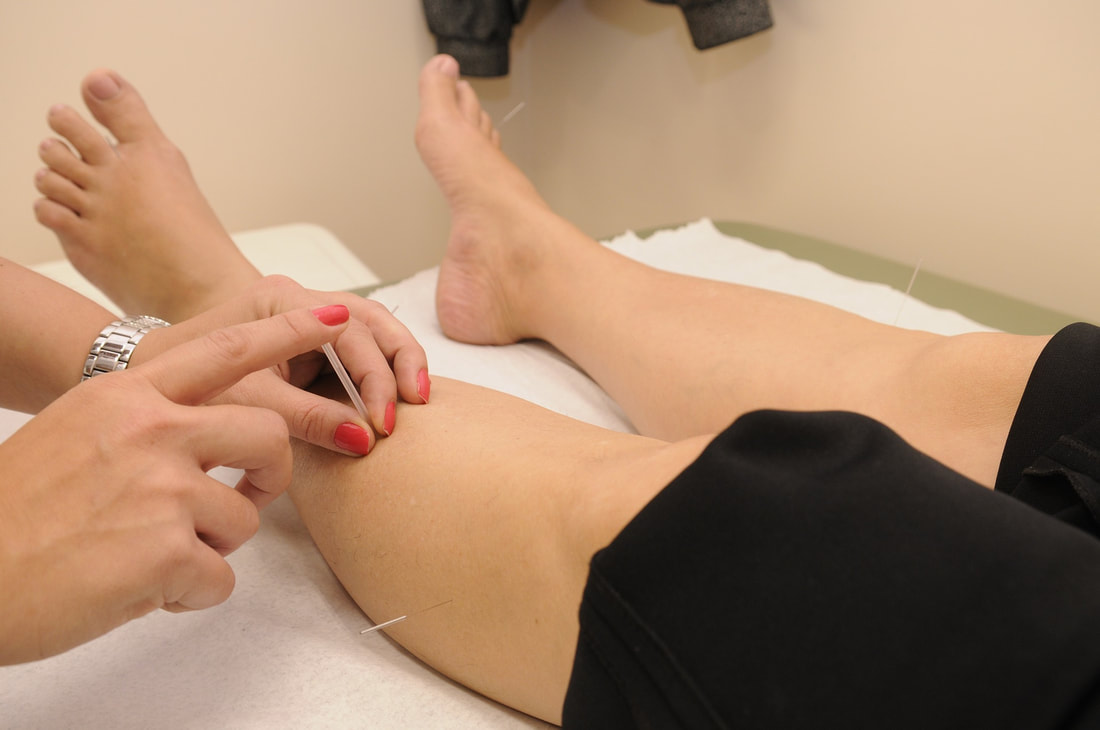|
Most people have some idea about acupuncture, even if they don't know exactly how it works. But many aren’t sure about the difference between acupuncture needling and dry needling. This is a question that comes up all the time during myotherapy sessions! So let’s look at the key similarities and differences. The Similarities
First, let’s look at the common ground between the two forms of treatment. The needles Both use needles as the tool of treatment. These needles can come in various lengths and thicknesses depending on what they are used for. Needles should always be sterilised and single-use. The training Qualified practitioners have to be trained extensively in how to correctly needle a client. Learning where, when and how to use a needle on a human body is a bit intimidating, but it is essential for safety reasons. Whether you get acupuncture from a Traditional Chinese Medicine practitioner or dry needling from your Myotherapist, you can rest easy knowing there has been months or even years spent on training. However, dry needling courses can also be offered as short weekend courses for practitioners like remedial massage therapists, physiotherapists, chiropractors, etc. If I'm honest, I don't think these courses are long enough, in depth enough, and with enough assessment and examination of each participant. Acupuncturists and Myotherapists train for a long period of time, need to pass both written and practical exams, and complete student clinic treatments under supervision to build their needling competency. The Differences Now we get to the differences between the two forms of treatment. Why it’s done & what it treats Acupuncture is a Traditional Chinese Medicine practice, with thousands of years of use. It is used as one treatment form to bring the body back into balance according to TCM treatment protocols, the most familiar of these being the system of meridians, or energy points throughout the body. Acupuncture can be used to balance hormones, optimise digestion, reduce stress and treat a lot of conditions, including musculoskeletal issues. I'm always very honest with people when I say that I don’t understand the theory or application well because I’m not a trained acupuncturist, and I refer any more specific acupuncture questions to Amanda Cox-Edwards at Upwey Acupuncture. Dry needling is a modern physical therapy. It is used to correct imbalances in musculoskeletal health. The goal is to release tension in a muscle, returning it to its natural, neutral tone. Dry needling is used specifically for muscle and joint complaints, as a comparison to acupuncture which has more system wide applications. Where it is used Acupuncture can be used directly over an area of concern. But it can also be used distally – that is, a distant point on the body that is related to the area of concern according to the meridians. Certain points on the bodies surface relate to other areas, including internally. Of course, your acupuncturist won't needle directly into your kidneys to treat a kidney issue or into your intestines to treat a digestive issue, they will use the TCM protocols to stimulate points throughout the muscles and skin of your body that relate to the kidneys or digestive system. On the other hand, dry needling is used directly on the affected muscles. We find the muscle that is tight, spasming or needs to be released, and then locate the spots of most tension within that muscle and that becomes our needling target zone. How the needle is used The final major difference is how the needle itself is used as a tool. In acupuncture, the practitioner will insert the needle in the specific spot and depth and generally leave it to do its job while the client relaxes. This can be for up to 45 minutes, depending on what they are treating. Dry needling is not left alone. Instead, the practitioner will often try to stimulate the muscle fibres by moving the needle, helping to release the tension. The most commonly used stimulation techniques include an up-down motion to repeatedly hit the target within the muscle; a twisting action to wind and release the tissue; and in-out motions on an angle to release broader areas of tension. Some therapists take an aggressive approach to dry needling, and it can be uncomfortable or even painful to receive needling from this type of therapist. By now, you probably know that I'm your gentle Myotherapist, so in typical gentle fashion I use very slow, deliberate stimulation techniques where needed. I also like to let my needles rest then re-stimulate it a few minutes later, rather than continuous stimulation. Dry needling is just one tool out of a big, broad toolbox that Myotherapists have to use. Scared of needles? We have plenty of other ways to gently encourage your muscles to relax and release without needing to use needles on you. Does dry needling sound like something you want to try? The good news is that myotherapists have extensive and ongoing training in dry needling. So book yourself in a session to try it today. Comments are closed.
|
Meet Our Team
We have a team of great practitioners available 7 days a week at our Rowville clinic. Archives
July 2024
Categories
All
|
Got a question about Myotherapy?
Contact Mel by phone, email or Facebook
|
Simple Wellness Myotherapy & Remedial Massage Clinic
Shop 12B 150 Kelletts Rd Rowville VIC 3178 |
Phone us on
03 8204 0970 |


 RSS Feed
RSS Feed